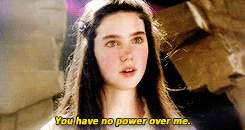|
Here we are again. It’s the time of the year when we have to start setting goals for our organization. And after 2020, a year like no other, 2021 is sure to be interesting.
When it comes to goals, there’s one key question we need to ask ourselves: Can these goals be told in a story? You’ve heard the adage: Facts tell but stories sell. It’s true in marketing and advertising. It’s equally true when it comes to setting goals for an organization. That’s because setting a goal is just the first step in the process. After we’ve developed goals for our organization, we have to sell it to the troops, and we need to do it convincingly. If 2020 forced us to prioritize what was most important to us in life, then our goals for 2021 must be endeavors worth pursuing. And that comes down to good communication skills. It’s a fact. People make decisions based on emotions rather than logic. Whether we’re trying to accomplish a specific task or raise funds, we have to be able to communicate our goals clearly and emotionally to our members and constituents. We have to bring people on board. Rally our members to our cause and lend their support. Y’know, herd cats. (If you've ever tried that, you know it's very hard to do.)
If we want others to join us on our quest, we have to be able to show our members why ours is a worthy cause. The more enthusiasm we can generate about our goal, the easier it will be to accomplish.
How do we inspire the type of passion that we want from members, the type of enthusiasm that’s going to carry us through good times and bad until we cross our goal line? With a good story. How true it was when "Game of Thrones"' Tyrion Lannister said, "There’s nothing more powerful in the world than a good story. Nothing can stop it. No enemy can defeat it." Whether our objective is a one-time, standalone goal (think sponsoring a clothing drive for natural disaster victims) or part of a larger, long-term initiative or mission statement (think serving the needs of children with disabilities) a good narrative helps us communicate more persuasively with our members. The more we can connect with people on an emotional level, rather than a purely rational one, the more excitement we’ll generate for our cause, the faster we’ll achieve it … and the invested everyone will feel. According to Joseph Campbell, one of the world’s foremost authorities on the significance of myths and storytelling, “Everything starts with a story.” “Everything starts with a story.” – Joseph Campbell
Great stories touch us on an emotional level and teach us universal truths about human conduct. Think about it: Every story we’ve ever been told has had a point to it, a theme. The theme is a lesson about life. Something to which humans should aspire. A goal.
Consider your goals from a storyteller’s perspective As we set goals for our organization, let’s take time to consider these goals, one by one, from a storyteller’s perspective. Every story has a hero. In our case, the hero is our organization. Every story has a conflict. There’s something wrong that needs to be fixed. Perhaps we’re trying to raise money to send aid to families with children adversely affected by COVID-19. The conflict is, some children don’t have means to basic necessities, and our organization wants to fix that. Every story also has a resolution. In our case, it’s our objective. Accomplishing our goal will resolve the issue at hand and bring the story to its close. 
Can we incorporate these elements into our goal and use them to weave a compelling story that captivates our members? The truth is, people have a fundamental need to connect with something larger than themselves.
A good story about our organization and its goals will help bring more people into our tent and enfold them into its larger mission. As organizational leaders, we must be able to find the narrative within our cause, capitalize on our natural storytelling strengths, and express our goal with clarity, creativity and conviction.
Embrace the conflict
Oh, yeah. There’s one more thing to remember, too. By definition, great stories involve a journey that is rarely easy. In fact, as is often the case, the more conflict, the better the story. So let’s approach our goals with the same mindset. It won’t be easy to achieve (and, if it is, perhaps we’ve set the bar too low). In most narratives, the hero has a long-term goal that is fed by a series of short-term goals. Accomplishing our short-term goals are the means by which we eventually achieve our ultimate mission. We can think about our organizational goals the same way. Our long-term goal is usually provided in our mission statement. It is our story’s theme. As you know, our long-term mission is achievable, measurable and time specific.
Our mission (not an impossible one) then must be broken down into shorter-term functions and operational initiatives. Short-term goals are great ways to identify specific functions that need to be undertaken, and offer measurable results that allow us to chart our progress, feel a regular and much-needed sense of accomplishment, and move us further along the narrative toward our ultimate goal.
And it’s that sense of accomplishment – of fighting for a cause, righting a wrong, creating a better tomorrow – that creates the pride and emotional connection that will keep our protagonists (members) coming back for more. So when it comes time to set a goal for your organization, be bold, creative and inspiring. Identify the story inherent within your mission and use it to assemble your short- and long-term goals. In the end, the goals you set today will become the stories your members live tomorrow. Let’s make them exciting ones!
Have a goal in mind? Our event and donation sites (templates included!) make it easy to tell your story.
Updated since original publication on 12/16/16.
0 Comments
Your comment will be posted after it is approved.
Leave a Reply. |







